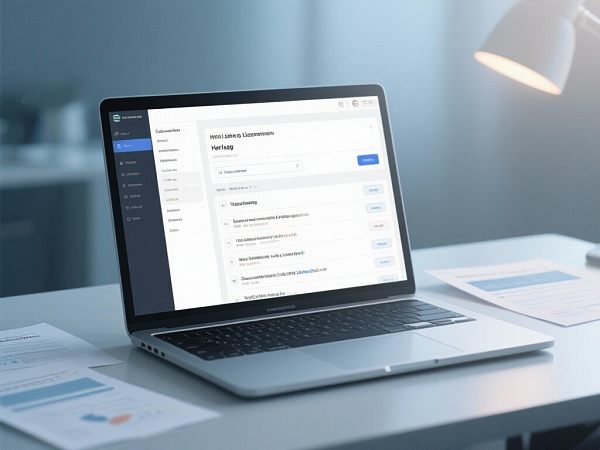Easy Camp Cloud Intelligent Website Construction and Marketing System Platform!
I. The Authoritative Definition and Core Value of Multilingual Website Development
1. The authoritative definition of multilingual website construction
Multilingual website development refers to the professional engineering of systematically creating, deploying, and managing multiple language or regional versions of a website to adapt to the languages, cultures, search habits, and legal requirements of different countries and regions around the world . It's not just simple content translation, but an international digital strategy encompassing technical SEO architecture (such as Hreflang tag deployment), content localization, user experience (UX), and conversion process optimization . Professional multilingual website development aims to ensure that the website is correctly indexed by search engines such as Google and achieves the highest rankings and conversion rates in the target market .
2. The Strategic Core Value of Professional Multilingual Website Construction
II. The Development History and Strategy Evolution of Multilingual Website Construction
The history of building multilingual websites is an evolution from "extensive translation" to "refined Hreflang architecture".

1. Early Stage: Human Translation and Domain Name Experimentation (2000s-2010)
Technical features: It mainly relies on human translation and uses different domain name structures to distinguish languages.
Independent domain name (Country-code TLD): such as example.de, example.fr.
Subdomains: such as https://www.google.com/search?q=en.example.com, https://www.google.com/search?q=fr.example.com.
Strategy pain points:
High cost: Maintaining multiple domain names or subdomains is costly.
SEO issue: Unable to explicitly tell Google "which page is the language alternative" , resulting in serious content duplication problems .
2. Google Hreflang Standardization and SEO Driven (2010-2018)
Milestone: Google officially launched the Hreflang tag to identify different language or regional versions of a website .
Technological shift: Multilingual website development is moving towards subdirectory structures ( example.com/en , example.com/fr ) and is mandated to deploy Hreflang .
Challenges: Hreflang deployment is extremely complex , and code errors and content matching errors result in inconsistent website rankings for many websites . **Website performance (CWV)** is beginning to face challenges in global deployments.
3. AI-driven, systematic Hreflang, and high-conversion design (2018 to present)
Key focus: The multilingual website system becomes a one-stop solution that natively supports Hreflang automation, AI-assisted content localization, and global CWV optimization .
Strategy Deepening:
Systematic architecture: All language versions are managed using a single CMS/PaaS platform , reducing maintenance costs .
AI Localization: AI assists in multilingual keyword research and content style localization .
Performance optimization: Global CDN acceleration has become standard, ensuring loading speed and user experience in different regions .
Trend: Modern multilingual website development is a perfect blend of technology, marketing, and globalization strategies .
III. The Technical Principles of Multilingual Website Construction: Three Core International SEO Mechanisms
1. Google Hreflang Architecture Deployment and Monitoring
In principle: Hreflang tags are the only official way Google identifies the different language/regional versions of a website . It tells Google "what language or region this page is aimed at" .
Core technologies:
Two-way Hreflang links: A two-way link must be established between all language versions . If a German page links to an English page, the English page must also link back to the German page ; otherwise, the tag will be invalid.
The "x-default" tag: Deploy the "x-default" tag to instruct Google which default version to display when it cannot match the user's language or region .
Automated error diagnosis: A professional system monitors Google Search Console reports in real time . detection and fix of Hreflang deployment bugs**, avoiding potential ranking and indexing issues .
2. Content localization and search intent matching
The principle is that users in different countries have different search habits, use different vocabulary, and even have different search intents . Content localization is not just about translation; it's about readjusting keywords and content based on the target region .
Core technologies:
Multilingual keyword research: Use localized keyword research tools to ensure that German content uses popular German search terms , rather than simple translations of English words.
Cultural and habit adaptation: Adjust images, color schemes, date formats, currency, units of measurement , etc. compatible with the cultural habits of users in the target country**.
Localized time zones and contact information: Ensure that different language versions display local phone numbers, email addresses, and time zones for the region , enhancing trustworthiness .
3. Global performance optimization and CWV compliance
Principle: To ensure that website loading speed and user experience meet Google's Core Web Vitals (CWV) standards in any corner of the world .
Core technologies:
Global CDN network deployment: Deploy the website's static resources to a global content delivery network (CDN) to ensure fast loading for users in Europe, Asia, South America, and other regions .
Server location optimization: Select server locations based on primary target markets to minimize latency .
Code simplification and asynchronous loading: Ensure that multi-language switching mechanisms, scripts, style sheets , etc. , do not hinder the loading of critical page content , passing CWV performance testing .
IV. Core Features and Strategic Advantages of Professional Multilingual Website Construction
1. The highest standards and technical barriers of international SEO
Features: The service strictly adheres to complex official specifications such as Google Hreflang and multi-region SEO , which cannot be achieved by simple CMS plugins .
Advantages: Completely solves the ranking and indexing problems of global websites , establishing an unparalleled international SEO technical barrier .
2. Continuous and stable multi-regional traffic assets
Features: One-time investment in construction, long-term and continuous free and accurate organic traffic from multiple countries and languages .
Advantages: It diversifies the traffic risk of a single market and builds a global digital growth flywheel .
3. User experience design with high conversion rates
Features: The design process is centered on "international conversion rate" and fully considers user behavior in different cultural backgrounds .
Advantages: The website not only becomes discoverable, but also engages users . This effectively increases inquiry rates, form submission rates, and sales conversion rates .
4. Unified platform management and low maintenance costs
Features: All language versions are based on the same underlying CMS/PaaS system .
Advantages: It greatly simplifies the difficulty and cost of later maintenance, content updates, and feature iterations , reducing...The complexity of and maintenance .
V. In-depth Application and Practical Scenarios of Multilingual Website Construction

1. Targeted customer acquisition through precise inquiries for global B2B enterprises
Applications: Suitable for B2B industrial, machinery, and software companies with high average order values and business coverage across multiple continents .
Practical application:
Architecture: Uses a subdirectory structure + Hreflang .
Content: We write localized industry white papers for high-value markets such as German and Japanese , ensuring the professionalism of the content and EEAT standards .
Conversion: Deploy local contact information and time zone display in different language versions to facilitate communication with international customers .
2. International market share grabbing by DTC/e-commerce brands
Applications: Suitable for DTC brands and cross-border e-commerce businesses that need to sell products directly to global consumers .
Practical application:
Architecture: Optimize product pages for multilingual SEO to ensure that Google Shopping in different countries can correctly index products .
Content: Ensure product descriptions, size charts, prices, and shipping costs are localized and currency-compatible .
Technology: Global CDN acceleration ensures fast loading of the website in all target countries during peak periods (such as Black Friday) .
3. Website international migration and risk control
Application: Suitable for scenarios where existing monolingual websites are upgraded to multilingual structures or domain names are changed .
Practical application: During the migration process, the SEO expert team participationPlan redirects and immediately deploy Hreflang and GSC verification when the new site goes live to maximize the protection of the website from losing existing traffic and rankings during internationalization upgrades .
4. Solve the problem of high costs for manual translation in foreign trade enterprises.
Application: Suitable for foreign trade enterprises with multiple language requirements and frequent content updates .
Practical application: Employing a multilingual website system with integrated AI-assisted translation tools reduces the time and cost of content translation , while providing SEO experts for final localization keyword and cultural review to ensure the professionalism of the content .
VI. YiYingBao: Your Strategic Partner for Multilingual Website Development
E-Creation provides the industry's highest standard of multilingual website building services, delivering complex international SEO architecture in a systematic and standardized manner , ensuring your brand can enter the global market in the most efficient and authoritative way .
Get a professional international SEO website architecture diagnosis now!
Build your global digital assets using Google Hreflang's official standards.
Transform multilingual website investments into a long-term, stable source of international traffic.
Join YiYingBao on your journey to precise customer acquisition in the global market!
FAQ
1. What are the consequences of deploying Hreflang tags incorrectly?
Answer: Hreflang deployment errors are the biggest SEO risk for multilingual websites, resulting in ranking problems and duplicate content penalties.
Ranking issues: Google may fail to correctly identify the target language and display German pages to French users , resulting in a poor user experience and a very high bounce rate .
Duplicate content penalty: Without the correct Hreflang tags, Google may consider your multilingual versions to be low-quality content that is duplicated , thus lowering the overall authority of your website .
2. Why can't we just use the Google Translate plugin to create a multilingual website?
Answer: Because the Google Translate plugin does not meet SEO requirements and cannot be indexed by Google.
Unindexable: Translation plugins typically use JavaScript to perform content conversion on the browser side , and search engine crawlers cannot crawl and index this translated content .
No Hreflang: The translation plugin cannot generate the Hreflang tags required by Google , and cannot resolve the issue of duplicate content .
Poor localization: The translation quality is low, making it impossible to conduct keyword localization research and cultural adaptation , resulting in extremely low conversion rates .
3. When building a multilingual website, should you choose a separate domain name, subdomain, or subdirectory?
Answer: Experienced SEO experts recommend the "subdirectory" structure.
Subdirectories ( example.com/fr ): These have the highest SEO weight , all subdirectories share the authority of the main domain , have the lowest construction and maintenance costs , and are easy to deploy with Hreflang .
Subdomain (https://www.google.com/search?q=fr.example.com): Weight is dispersed , Google tends to treat it as an independent site.
Independent domain (example.fr): has the highest management cost , and each domain needs to have its own authority established .
4. What is the typical service cycle for building a multilingual website?
Answer: It depends on the size of the website and the number of languages supported, usually in to months.
Early stage ( month): International SEO architecture planning, target language keyword research, and Hreflang strategy determination .
Mid-term ( months): Core technology development, multilingual CMS deployment, content translation and localization, and CWV performance optimization .
Later ( month) Before launch redirect check, Hreflang deployment verification, GSC error troubleshooting .

Customer Reviews
Mr. Song, Marketing Director of a global B2B industrial equipment manufacturer
"Our previous German and French websites had very low traffic and inconsistent rankings. After using E-Creation's multilingual website building services, they completely restructured our Hreflang architecture and solved the duplicate content problem . Now, the number of inquiries on our German website has doubled."The organic traffic to French websites increased by times. . One system manages all languages , significantly reducing operational costs . This system is a true digital asset designed for international B2B customer acquisition .
Ms. Wang, CEO of a large DTC cross-border e-commerce company
"As an e-commerce platform, website performance and localized conversion are crucial. The multilingual website built for us by the Yiyingbao team passed the global CWV performance test perfectly , and global CDN acceleration ensured an excellent shopping experience for customers in different regions . Their content localization service ensured that our product descriptions..." match local culture and search habits . After the website launches... months, order conversion rates in non-English speaking markets improved. . This is what a professional, globally-oriented website that drives sales looks like .



